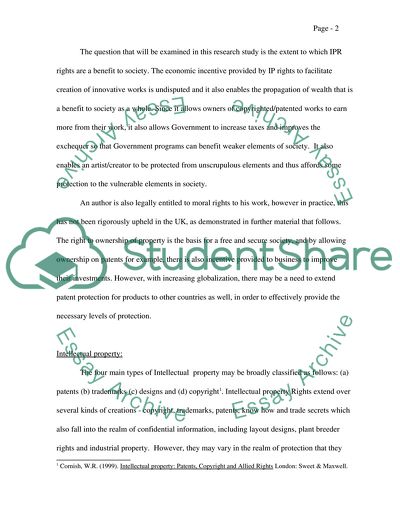Cite this document
(“Intellectual and Modern Property Essay Example | Topics and Well Written Essays - 4000 words”, n.d.)
Intellectual and Modern Property Essay Example | Topics and Well Written Essays - 4000 words. Retrieved from https://studentshare.org/information-technology/1707574-critically-consider-the-extent-to-which-the-law-of-intellectual-property-meets-the-needs-of-modern-society
Intellectual and Modern Property Essay Example | Topics and Well Written Essays - 4000 words. Retrieved from https://studentshare.org/information-technology/1707574-critically-consider-the-extent-to-which-the-law-of-intellectual-property-meets-the-needs-of-modern-society
(Intellectual and Modern Property Essay Example | Topics and Well Written Essays - 4000 Words)
Intellectual and Modern Property Essay Example | Topics and Well Written Essays - 4000 Words. https://studentshare.org/information-technology/1707574-critically-consider-the-extent-to-which-the-law-of-intellectual-property-meets-the-needs-of-modern-society.
Intellectual and Modern Property Essay Example | Topics and Well Written Essays - 4000 Words. https://studentshare.org/information-technology/1707574-critically-consider-the-extent-to-which-the-law-of-intellectual-property-meets-the-needs-of-modern-society.
“Intellectual and Modern Property Essay Example | Topics and Well Written Essays - 4000 Words”, n.d. https://studentshare.org/information-technology/1707574-critically-consider-the-extent-to-which-the-law-of-intellectual-property-meets-the-needs-of-modern-society.


